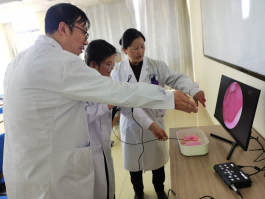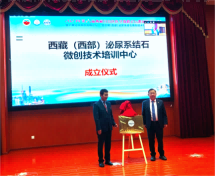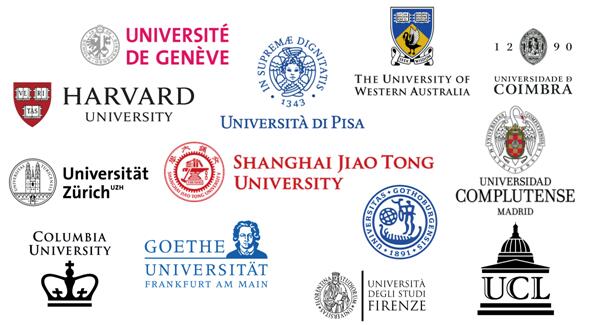10 minutes for 72 year old Tibetan compatriots: Shanghai experts completed the first transurethral prostate blue laser vaporization in Xizang People's Hospital | Urinary calculi | Xizang
On June 15, the establishment ceremony of the 8th Xizang Autonomous Region Medical Everest Forum Urology Sub Forum, the Shanghai Tibet Urological Plateau Summit Forum and the Xizang Urinary Calculus Minimally Invasive Technology Training Center was held in the Shigatse People's Hospital. After the meeting, Xue Wei, vice president of Renji Hospital affiliated to Shanghai Jiaotong University School of Medicine and director of the Department of Urology, led a team to complete the first transurethral blue laser vaporization of the prostate in Xizang Autonomous Region, filling the gap in this technology in Xizang Autonomous Region.
10 minutes for 72-year-old Tibetan compatriots
10 minutes to relieve worries for 72 year old Tibetan compatriots

The patient undergoing transurethral blue laser vaporization of the prostate is a 72 year old Tibetan male sibling. He has been experiencing progressive difficulty urinating for over 2 years and has been diagnosed with benign prostatic hyperplasia, controlled by medication. However, in the last month, his symptoms worsened, with frequent urination, urgency, incontinence and even acute urinary retention, so he was transferred to the Department of Urology of Shigatse People's Hospital.
Dr. Xuan Hanqing, a specialist in the urology department of Renji Hospital in Tibet, carefully inquired about the condition. Ultrasound examination showed that the prostate gland had enlarged, with a volume of 70mL, protruding into the bladder, and residual urine was as high as 141mL. The evaluation found that the uncle's overall condition is good, the surgical indications are clear, and Xuan Hanqing has fully communicated with the patient and their family to prepare for minimally invasive surgery for prostate hyperplasia.
Xue Wei led a team to Shigatse People's Hospital for academic exchange just as the 8th Urology Sub Forum of Xizang Autonomous Region Medical Everest Forum was held in Shigatse People's Hospital. Xuan Hanqing communicated with the urology team of Renji Hospital regarding the patient's condition and developed a thorough perioperative treatment plan for the patient. He decided to implement transurethral prostate blue laser vaporization surgery.
"Compared with traditional transurethral resection of the prostate, prostate blue laser vaporization is more thorough in removing the prostate, significantly reducing surgical time, reducing intraoperative bleeding, and achieving faster recovery. It can be used as a daytime surgery and is an ideal method for treating prostate hyperplasia." Xue Wei introduced that transurethral prostate blue laser vaporization uses laser surgical equipment independently developed in China, which has the characteristics of high tissue vaporization efficiency, small thermal damage, less bleeding, and fast postoperative recovery. When blue laser vaporization occurs, the prostate tissue instantly disintegrates. The combination of vaporization and enucleation maximizes its advantages by vaporizing along the surface of the capsule gland, maximizing the removal of proliferative glands.

Sun Jie, the person in charge and deputy chief physician of the prostate hyperplasia sub specialty in the urology department of Renji Hospital, performed surgery on the patient. During the operation, significant hyperplasia was observed in both lobes of the prostate, and there were obvious small trabecular compartments in the bladder. The entire surgery took only 10 minutes, and immediately after the surgery, the urination test was smooth and the urine color was clear.
Xue Wei specifically pointed out that due to the special geographical environment and climate in high-altitude areas, as well as the insufficient understanding of prostate hyperplasia among the Tibetan population, patients with prostate hyperplasia who come for treatment are generally older and often complicated with important organ diseases such as heart and lungs or functional deficiencies, which puts higher requirements on the efficacy and safety of surgery. It is hoped that with the technical support of the Department of Urology of Renji Hospital, transurethral blue laser vaporization of the prostate can be vigorously developed in Xizang to protect the prostate health of elderly men in Tibet.
Under the leadership of the Department of Urology of Renji Hospital, Xigaze People's Hospital established the Tibet Urinary Calculi Minimally Invasive Technology Training Center, which is currently the first minimally invasive urinary calculi training center in the Tibet Autonomous Region. At the same time, the establishment of the training center is also another important measure for medical assistance to Tibet since Renji Hospital and Xigaze people's Hospital signed the "hospital package" counterpart support cooperation agreement in August 2017. In the future, it will strengthen the training of special technical personnel, improve the level of clinical diagnosis and treatment services of urology in Xigaze people's Hospital, and create a medical team that can not be taken away.

Building an unstoppable medical team
Led by the Department of Urology of Renji Hospital, the Shigatse People's Hospital established the Xizang Urinary Calculus Minimally Invasive Technology Training Center, which is currently the first minimally invasive technology training center for urinary calculi in the Xizang Autonomous Region. At the same time, the establishment of the training center is another important measure of medical assistance to Tibet since the signing of the "hospital package department" cooperation agreement between Renji Hospital and Shigatse People's Hospital in August 2017. In the future, it will strengthen the cultivation of specialized technical talents, improve the clinical diagnosis and treatment service level of the urology department of Shigatse People's Hospital, and build a medical team that cannot be taken away.
The establishment ceremony was presided over by Ge Wang, Vice President of Shigatse People's Hospital, and Xue Wei and Ge Wang jointly unveiled the plaque for the training center.




